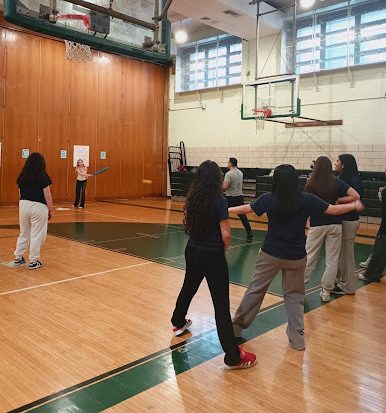“From the tip of every [tree] branch, like a fat purple fig, a wonderful future beckoned and winked. One fig was a husband and a happy home and children, and another fig was a famous poet and another fig was a brilliant professor, and another fig was Ee Gee, the amazing editor…I saw myself sitting in the crotch of this fig tree, starving to death, just because I couldn’t make up my mind which of the figs I would choose. I wanted each and every one of them, but choosing one meant losing all the rest, and, as I sat there, unable to decide, the figs began to wrinkle and go black, and, one by one, they plopped to the ground at my feet.” – The Bell Jar (Plath, 1963)
Picture yourself standing in the middle of a crowded room: you are surrounded by familiar faces and yet you still feel utterly and entirely alone– unsure of who you are, or rather who you “should be.” This feeling has become a reality for many, but is perhaps most strongly experienced by teenagers as they navigate the countless twists and turns of adolescence. The turbulent ways in which many young adults live their lives has led them to question everything, from what they think of the world around them to what they think of themselves. Classic works of literature explore these themes of identity and alienation in profound ways, capturing the struggle of characters who grapple with their sense of self and belonging.
In today’s fast-paced and astonishingly interconnected world, where the internet has often amplified these feelings of isolation, the exploration of the aforementioned themes feels incredibly relevant. As our identities are perpetually being shaped by peer pressure, societal standards, and our own personal experiences, we teenagers can find great value and resonance in reading classic novels that offer unique insights on these challenges. By delving into the lives of renownedly complex characters, young people can relate to their struggles, eventually fostering a sense of self-awareness as they forge their own paths to understanding who they are.
Existential Alienation
Existential Alienation, the feeling of being disconnected from oneself, society, or existence as a whole, is one sentiment that is almost too commonly experienced in today’s world. In many classic philosophical works, the protagonists navigate their alienation in complex and, at times, disturbing ways, thus revealing the harrowing intricacies of human existence. This struggle resonates deeply with teenagers, who often face the problems that come along with isolation, making these narratives particularly relevant.
Franz Kafka’s The Metamorphosis (1915) tells the unsettling story of Gregor Samsa, a traveling salesman, who wakes up one morning to find himself transformed into a massive insect. Whilst grappling with his new physical form, he feels increasingly isolated from the rest of the world and repulsed by the oddity that he has now become. The novella covers feelings of alienation, identity, and the heavy burdens of responsibility, as Gregor meets a tragic fate after the complete loss of his will to go on. Despite the fantastical quality of this story, its message is not a stranger to many; there have been and undoubtedly will be points in our lives in which we’ve all felt alone in one way or another, believing at times that keeping ourselves separate from the crowd will magically solve all of our problems. It will soon become apparent, however, that this does more harm than good, reminding us that true connections and understanding are essential to overcoming the complexities of existence.
In Albert Camus’ The Stranger (1942), we follow Meursault, an emotionally distant Frenchman whose life changes course after he kills an Algerian man in self defense. The novel recounts Mersault’s trial, yet does not so much focus on the logistics of his hearing but rather the effect,or lack thereof, it has on his character. In a quote from Stuart Gilbert’s translation of The Stranger, Meursault reflects on his life, saying, “I looked up at the mass of signs and stars in the night sky and laid myself open for the first time to the benign indifference of the world.” Realizing that his passive attitude likens the universe’s indifference to human affairs, he is led to believe that he has formed a bond with the world. By depicting Mersault’s indifference to the chaos that surrounds him and his self isolation, Camus examines the absurd nature of human life and the unpredictable nature of emotions. This exploration particularly resonates with young adults, who often confront feelings of disconnection in their search for meaning in a world that can seem uncaring, ultimately prompting reflection of their own place within the vastness of being.
Psychological Struggles
The internal struggles that we face inevitably claw their ways to the surface, although they do not always show themselves in the same ways. They can manifest as anxiety, depression, or, in some extreme cases, “insanity”—a term which is often used to describe severe mental conditions that involve psychotic breaks with reality. Fyodor Dostoyevsky’s Crime and Punishment and Sylvia Plath’s The Bell Jar discuss these demonstrations of inner turmoil in great depth, and can be relatable, to a certain extent, despite being written from two completely different times.
Crime and Punishment (1866), by Fyodor Dostoyevsky, portrays an example of what happens when one’s alienation and identity issues push them over the edge. Dostoyevsky explores these psychological struggles through the protagonist, Raskolnikov, who commits murder in an attempt to prove his theory of the “extraordinary man,” the belief that people can ignore laws to achieve their vision for the future. Instead of relieving him of the torture of being isolated from the rest of society, this act pulls him deeper into his feelings of paranoia and (now) guilt, leading to him feeling outcasted from humanity as a whole. As the text notes, “[Raskolnikov] had become so completely absorbed in himself, and isolated from his fellows that he dreaded meeting, not only his landlady, but anyone at all.” (p. 25) His interactions with other characters prove that he desperately seeks human connection, directly contrasting with his growing anguish. Ultimately, the novel delves into the struggle to find one’s true purpose in a world that is filled with uncertainty, which many readers can relate to as they face their own obstacles in their search for the meaning of life.
A more contemporary work of literature depicting the psychological struggles that stem from societal pressure is Sylvia Plath’s The Bell Jar. The novel follows the story of Esther Greenwood, a young woman who finds difficulty balancing the pursuit of her own passions with those that American society in the 1950s expects her to fulfill. While she aspires to be a successful poet, she is continuously pushed to follow the career path that is more expected of women, that of secretarial work. After experiencing numerous romantic unpleasantries and job-related pitfalls, Esther falls into a deep depression, which is followed by several suicide attempts and bouts of what medical professionals dubbed “hysteria,” a diagnosis given to many women who were seen as frantic and “overly emotional.” The culmination of these things was undoubtedly caused by the buildup of pressure enforced on Esther by society, and even members of her own family. The internal monologue quoted at the beginning of this article was used, in context, to illustrate the profound impact of Esther’s indecision about her life choices. This internal conflict highlights the struggle many adolescents face when confronted with the weight of expectations and the fear of missing out on potential futures by not choosing the “right path.” Plath highlights the emotional toll that such indecision can take.
Journey of Self-Discovery
Finally, the Journey of Self-Discovery is the truly life-changing process in which one explores their identity and determines what they believe their purpose in life is. Bildungsroman, a German word that directly translates to “novel of education” or “novel of formation,” has been used to describe the literary genre that focuses on the psychological growth and development of books’ characters over the course of their lives. These novels can be particularly valuable, especially to younger generations, as readers are often experiencing the same self-actualization that is being conveyed through the plot.
James Joyce’s A Portrait of the Artist as a Young Man (1916) offers a rich exploration of the formative years of Stephen Dedalus, a young boy in early 20th-century Dublin, as he wrestles with his identity. Through Stephen’s experiences with his family, religion, and societal expectations, Joyce delves into the complexities of artistic ambition and the quest for personal freedoms. Stephen encounters a myriad of challenges that shape his world view, ultimately making it his purpose to break free from the constraints that were put upon him by his upbringing. He embarks on a journey to define himself as a writer and artist in a world that works so hard to suppress individuality. At the end of the novel, Stephen exclaims, “Welcome, O life! I go to encounter for the millionth time the reality of experience and to forge in the smithy of my soul the uncreated conscience of my race.” (p. 317) His saying that his soul is a permanent part of his existence and is vital to his perceived purpose in life reinforces his artistic passion, portraying how he intends to pursue it by using his unrestricted voice in order to provide a sort of conscience for the community that he has been born into. The pursuit of identity and self-definition resonates deeply with many today who have the same inclination to define themselves and their identities amidst the pressures of societal norms, career expectations, and the desire to carve out their own paths.
J.D. Salinger’s The Catcher in the Rye (1951) centers on Holden Caulfield, a disillusioned teenager who has just been expelled from his preparatory school. As he wanders solo around New York City, he grapples with feelings of solitude and cynicism, expressing a yearning for authenticity in a world that he perceives as “phony.” His interactions with both strangers and members of his own family highlight his inner struggles, resulting in a moving exploration of innocence and the issues that come with growing up. Holden had always dreamt of being the “catcher in the rye”, protecting children from the harsh realities of adulthood. His favorite teacher at his (former) prep school, Mr. Antolini, told him, “I have a feeling that you’re riding for some kind of terrible, terrible fall. . . . The whole arrangement’s designed for men who, at some time or other in their lives, were looking for something their own environment couldn’t supply them with. . . . So they gave up looking.” (p. 100-101) Mr. Antolini is trying to catch Holden in the midst of his “fall,” which in this case describes the descent into the dangerous world of adulthood; he expresses that Holden should not give up hope, but rather create his own opportunities and find happiness by his own means. This poignant narrative strikes a chord with many individuals who, like Holden, face the complexities of growing up and the search for reliability in an often overwhelming world, reminding us of the incredible importance of independence of thought and resilience.
In exploring identity and alienation through these celebrated works of literature, we uncover profound insights that tell us that we have never been alone in our struggles to find connections with others and define who we are as people. Characters like Gregor Samsa, Esther Greenwood, Stephen Dedalus, and countless others navigated the turbulent waters of self-discovery, encouraging readers to reflect on their own journeys, trying to help us understand our worth in a world that can feel all too cold. Ultimately, they serve as powerful reminders that, while it may be difficult to come to terms with, seeking out our identity is perhaps the most vital part of developing as a person and finding our true places in the world.
“When a man is born…there are nets flung at it to hold it back from flight. You talk to me of nationality, language, religion. I shall try to fly by those nets.” – James Joyce, A Portrait of the Artist as a Young Man (Joyce, 1916).





























